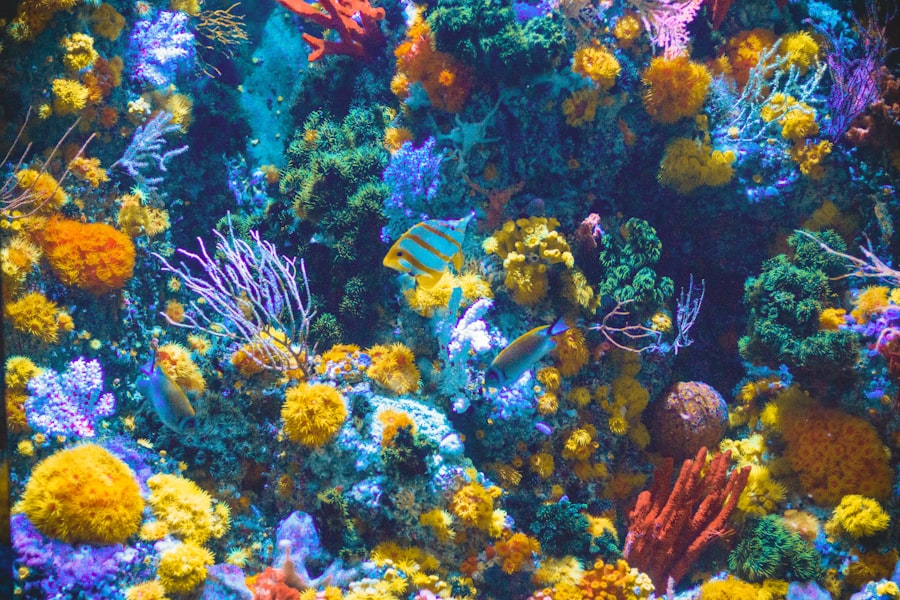Download links
How to install The Mysterious World of Angler Fish APK?
1. Tap the downloaded The Mysterious World of Angler Fish APK file.
2. Touch install.
3. Follow the steps on the screen.
Description
Angler fish, belonging to the order Lophiiformes, are a fascinating group of deep-sea fish known for their unique adaptations and intriguing behaviors. These creatures inhabit some of the most extreme environments on Earth, primarily the dark depths of the ocean, where sunlight fails to penetrate. The term “angler” derives from their distinctive method of luring prey, which involves a bioluminescent lure that dangles from their heads, resembling a fishing rod.
This adaptation not only highlights their evolutionary ingenuity but also underscores the challenges of survival in the abyssal zones they call home. The angler fish family encompasses a variety of species, each exhibiting unique traits and adaptations suited to their specific environments. While they are often depicted in popular culture as grotesque and fearsome creatures, angler fish play a crucial role in the marine ecosystem.
Their presence is indicative of the complex food webs that exist in the deep sea, where every organism, no matter how bizarre, contributes to the overall health of the oceanic environment. Understanding angler fish is not merely an exploration of an unusual species; it is a window into the mysteries of deep-sea life and the evolutionary processes that shape it.
Key Takeaways
- Angler fish are deep-sea creatures known for their bioluminescent lure and large mouths.
- They have a unique appearance, with a large head, sharp teeth, and a long dorsal spine used for hunting.
- Angler fish use their bioluminescent lure to attract prey in the dark depths of the ocean.
- Reproduction in angler fish involves the male fusing to the female and living as a parasite.
- Angler fish are found in deep-sea habitats around the world, with some species living in the Atlantic and others in the Antarctic.
Physical Characteristics and Behavior
The Lure of the Angler Fish
One of the most striking features of angler fish is the illicium, or lure, which protrudes from their foreheads. This lure is often tipped with a bioluminescent organ that emits light, attracting unsuspecting prey in the pitch-black depths of the ocean. The size and shape of this lure can vary significantly among species, with some angler fish sporting lures that can be several times longer than their bodies.
Physical Adaptations for Survival
Their bodies are typically flattened and elongated, allowing them to navigate through tight spaces in rocky crevices or among coral reefs. Many species possess large mouths filled with sharp teeth, enabling them to capture and consume prey much larger than themselves. The ability to expand their stomachs to accommodate large meals is another remarkable adaptation; this allows them to take advantage of infrequent feeding opportunities in their nutrient-scarce environments.
Hunting and Mating Behavior
Behaviorally, angler fish are generally solitary creatures, relying on stealth and ambush tactics rather than active pursuit to catch their prey. This adaptation not only aids in hunting but also serves as a means of communication during mating rituals.
Feeding and Hunting Techniques

The feeding strategies employed by angler fish are as diverse as the species themselves, but they all share a common theme: patience and precision. Utilizing their bioluminescent lure, angler fish can effectively mimic the appearance of smaller organisms, such as shrimp or small fish, which draws in curious predators. Once an unsuspecting victim approaches, the angler fish strikes with remarkable speed and accuracy, using its large mouth to engulf the prey whole.
This ambush technique is particularly effective in the dark depths where visibility is limited, allowing them to capitalize on their prey’s curiosity. Some species of angler fish have developed even more specialized hunting techniques. For instance, the deep-sea angler fish known as the “fishing frog” employs a strategy where it remains motionless on the ocean floor, using its lure to attract prey while blending seamlessly into its surroundings.
This form of camouflage is crucial for evading larger predators while simultaneously enticing smaller fish. Additionally, certain angler fish have been observed engaging in cooperative hunting behaviors, where two or more individuals work together to corral schools of fish into tight formations before launching a coordinated attack. Such behaviors highlight the complexity of their hunting strategies and the adaptability required for survival in an environment where food is scarce.
Reproduction and Mating Rituals
| Species | Mating Ritual | Reproduction Method |
|---|---|---|
| Lions | Mating season with courtship displays | Sexual reproduction |
| Bees | Dance to communicate location of mates | Sexual reproduction |
| Salmon | Return to natal streams to spawn | Sexual reproduction |
| Sea horses | Male carries eggs in a pouch | Sexual reproduction |
Reproduction among angler fish is as peculiar as their physical appearance and hunting methods. In many species, sexual dimorphism is pronounced; females are significantly larger than males, which can lead to fascinating mating dynamics. Male angler fish are often much smaller and have evolved a unique strategy for reproduction: they latch onto females with their sharp teeth and fuse with them, effectively becoming a permanent parasitic mate.
This adaptation ensures that males remain close to females for fertilization opportunities while minimizing the need for males to search for mates in the vast ocean. The mating rituals of angler fish can be quite elaborate and involve intricate displays of bioluminescence. During courtship, males may use their own lures to attract females or engage in a series of movements that showcase their physical prowess.
Once a male successfully latches onto a female, he will gradually lose his independent identity as he becomes absorbed into her body, sharing her bloodstream and relying on her for sustenance. This extraordinary reproductive strategy raises questions about genetic diversity and evolutionary advantages in such isolated environments where encounters between individuals are rare.
Habitat and Distribution
Angler fish are predominantly found in deep-sea environments, typically inhabiting depths ranging from 200 meters (656 feet) to over 2,000 meters (6,561 feet). They thrive in various marine habitats, including continental slopes, abyssal plains, and deep-sea trenches. The extreme conditions of these habitats—characterized by high pressure, low temperatures, and complete darkness—have shaped their unique adaptations over millions of years.
Some species are also found in shallower waters near coral reefs or rocky substrates, where they can exploit different ecological niches. The distribution of angler fish is global; they inhabit oceans around the world from the Atlantic to the Pacific and Indian Oceans. However, certain species have more localized ranges due to specific habitat preferences or ecological requirements.
For example, the famous “Humpbacked Anglerfish” (Lophius piscatorius) is commonly found in the North Atlantic Ocean and is often associated with sandy or muddy bottoms where it can easily camouflage itself while waiting for prey. In contrast, other species like the “Bearded Sea Devil” (Psychrolutes marcidus) are found at greater depths in more remote areas of the ocean. The diversity in habitat preferences among angler fish reflects their adaptability and resilience in one of Earth’s most challenging environments.
Conservation Efforts

Overfishing and Bycatch: A Deadly Combination
Overfishing poses a significant threat to certain populations of angler fish, particularly those that are targeted for commercial fishing due to their unique appearance or culinary value.
Habitat Destruction: A Looming Threat
Habitat destruction caused by deep-sea mining and climate change further exacerbates the challenges faced by angler fish. These activities alter the delicate ecosystems that support these fascinating creatures, making it even harder for them to survive.
Establishing marine protected areas (MPAs) can help safeguard critical habitats from destructive activities while allowing for research and monitoring of angler fish populations. Public awareness campaigns highlighting the ecological importance of these unique creatures can also foster greater appreciation and support for conservation initiatives.
If you’re fascinated by the mysterious world of angler fish, you may also be interested in learning how to master the art of online fishing with Taya365. This article, Master the Art of Online Fishing with Taya365, explores the techniques and strategies for successful online fishing, drawing parallels to the unique hunting methods of the angler fish. Discover how to lure in your target audience and reel in success with Taya365’s expert tips and tricks.
FAQs
What is an angler fish?
An angler fish is a deep-sea fish known for its unique appearance and hunting method. It has a large head with a wide mouth and sharp teeth, and a bioluminescent lure that it uses to attract prey.
Where do angler fish live?
Angler fish are found in the deep waters of the Atlantic and Antarctic oceans, as well as in the waters around Australia and New Zealand. They typically live at depths of 200 to 2,000 meters.
How do angler fish catch their prey?
Angler fish use a bioluminescent lure, called an esca, to attract prey in the dark depths of the ocean. When a smaller fish or crustacean approaches the lure, the angler fish quickly snaps its jaws shut, capturing its prey.
What do angler fish eat?
Angler fish are carnivorous and primarily feed on small fish, crustaceans, and other invertebrates. They are opportunistic feeders and will eat whatever prey is available in their deep-sea habitat.
Are angler fish dangerous to humans?
While angler fish are not typically dangerous to humans, they do have sharp teeth and a powerful bite. However, their deep-sea habitat means that encounters with humans are rare.





